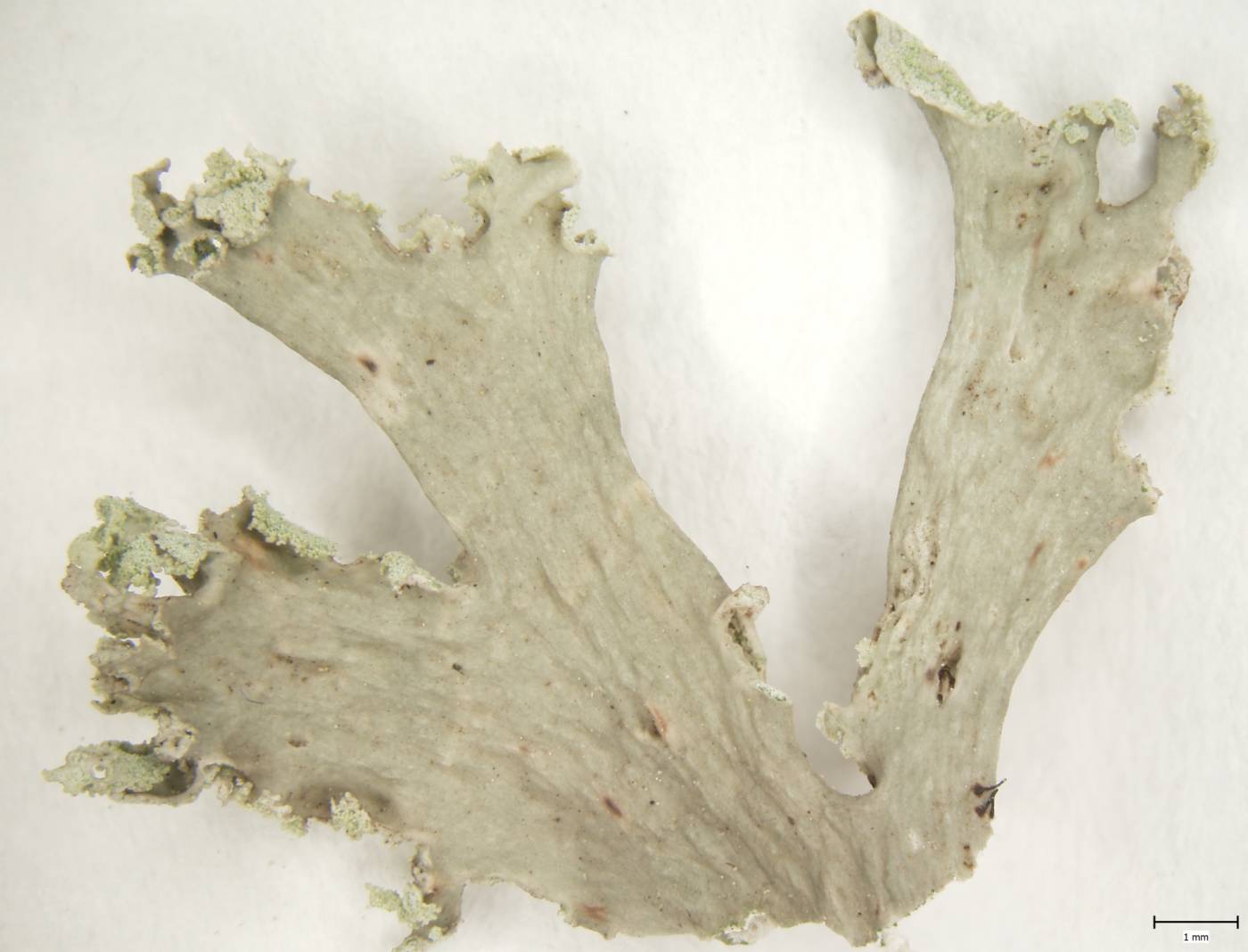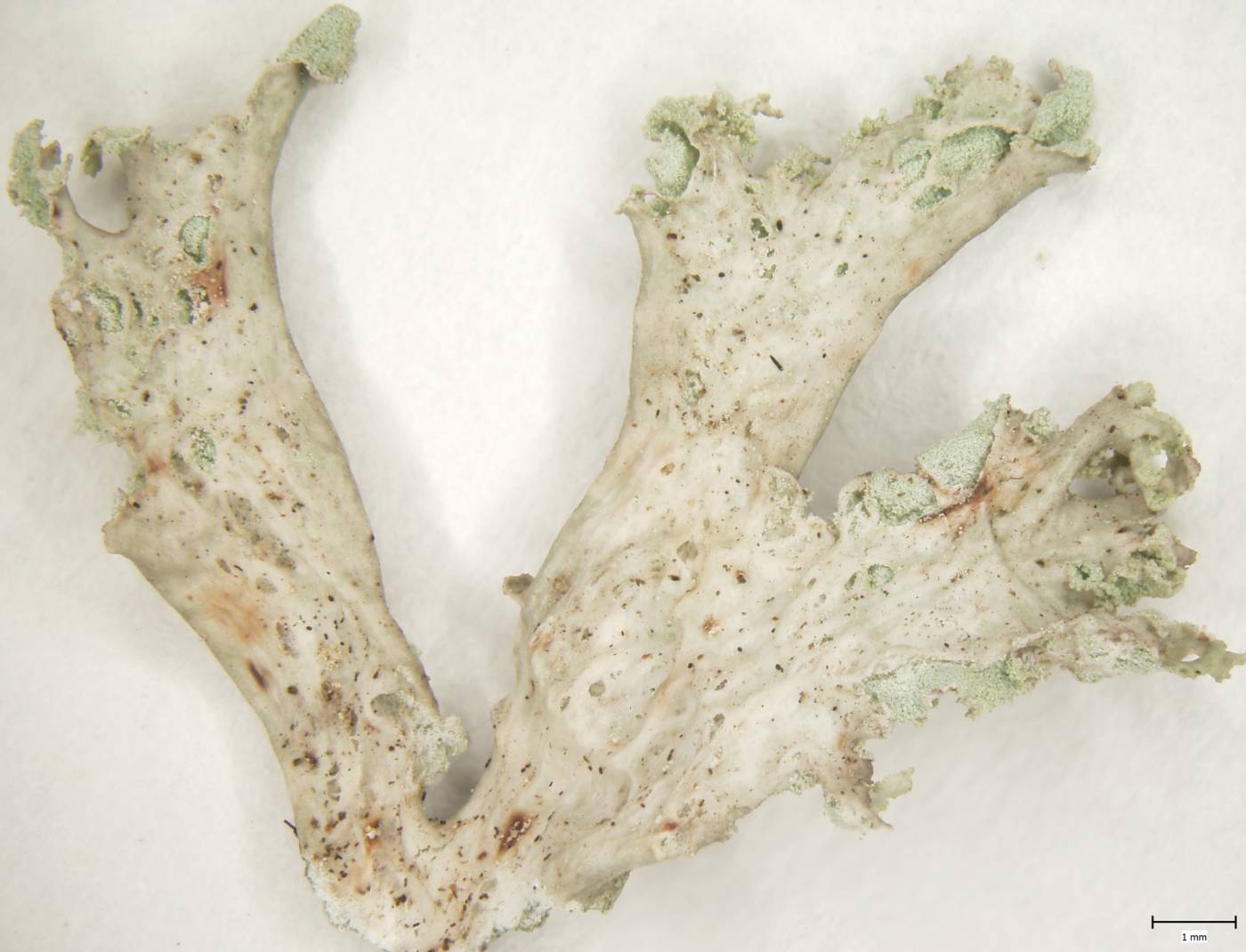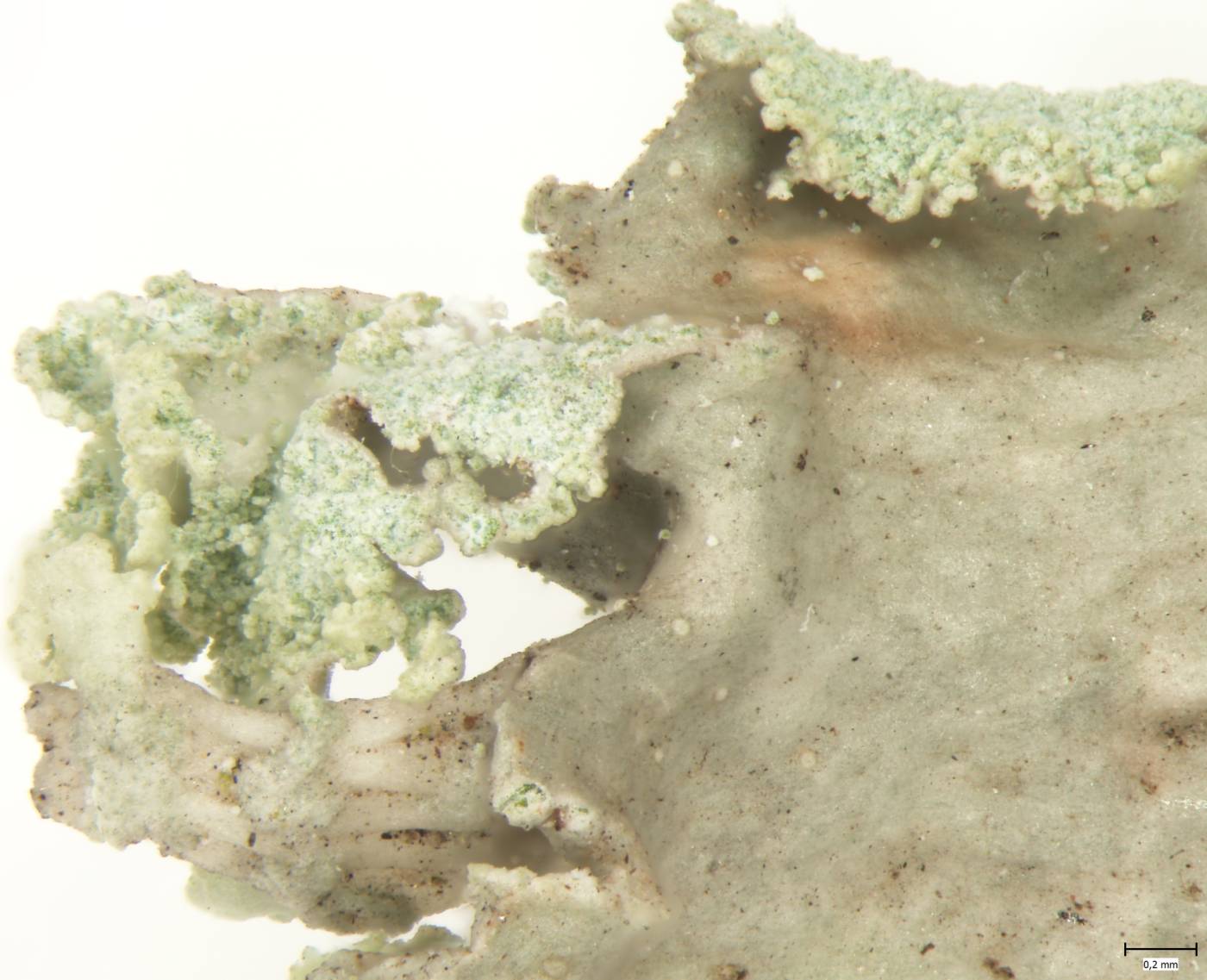Ramalina baltica is distinguished from a very similar R. obtusata by larger thalli, wider lobes, that are duller and more compact (the thallus of R. obtusata is glossy and hollow), by both marginal and laminal soralia (Nimis et al. 2018) and the presence of divaricatic acid (Stenroos et al. 2016). The species were often not distinguished in the past, R. baltica was sometimes considered a variety of R. obtusata (e.g., Černohorský et al. 1956).
Contrary to R. obtusata, which is a species of humid forests, R. baltica is distributed in open deciduous forests in lower elevations in the temperate zone. At the northern edge of its distribution area, in southern Finland, it mainly occurs in urbanized landscapes (Stenroos et al. 2016). In the Czech Republic, it was growing epiphytically on slightly nutrient-enriched bark of oak or larch. In Europe, the species is widely distributed, but rare and little known. In the past, it was repeatedly recorded by J. Suza in the first half of the 20th century (see the Vězda & Liška 1999 catalogue) from south Moravia (Podyjí, Moravský kras, Kunštát region) and by J. Anders from the Česká Lípa region. Probably the highest record is from an aspen bark in Povydří in the Šumava Mts (Suza 1936). Recent records are known from the Podyjí National Park and Moravian Karst, but other records listed under R. obtusata may also belong to R. baltica.
Literature: Nimis P.L., Hafellner J., Roux C., Clerc P., Mayrhofer H., Martellos S. & Bilovitz P.O. (2018): The lichens of the Alps – an annotated checklist. – Mycokeys 31: 1–634. Stenroos S., Velmala S., Pykälä J. & Ahti T. (2016): Lichens of Finland. – Norrlinia 30: 1–896. Černohorský Z., Nádvorník J. & Servít M. (1956): Klíč k určování lišejníků ČSR. I. díl. − ČSAV, Praha. Suza J. (1936): Doplňky k rozšíření lišejníků v Čechách. Část III. – Časopis Národního Muzea 110: 107–113.
taxonomic classification:Ascomycota → Lecanoromycetes → Lecanorales → Ramalinaceae → Ramalina
Red List (Liška & Palice 2010):RE – extinct
Red List (Malíček 2023):A – no recent data
Occurrence in the Czech Republic
All records: 8, confirmed 5. One click on a selected square displays particular record(s), including their source(s).



